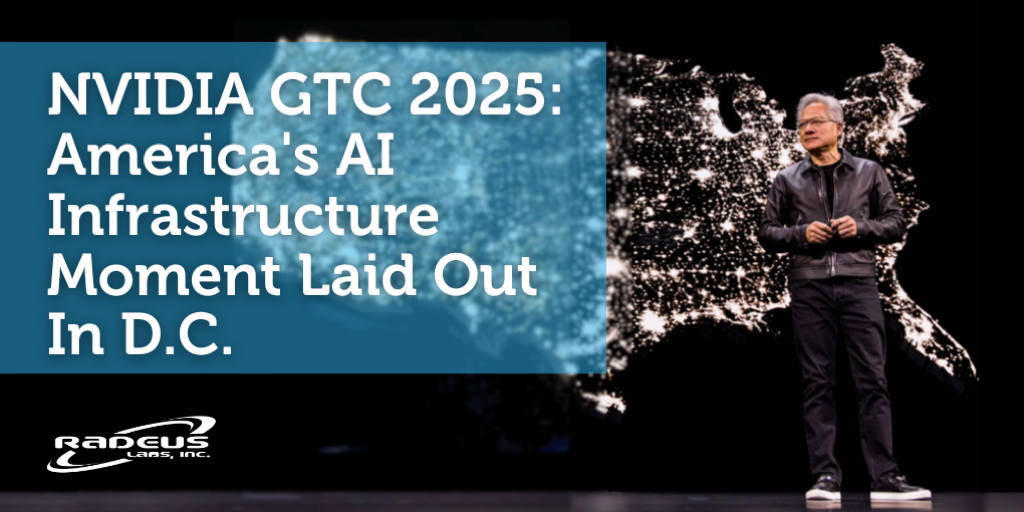When we wrapped up our time at AIAA AVIATION Forum & ASCEND 2025 earlier this month, we left with fresh insights and a deeper understanding of where aerospace and defense are heading.
Held in Las Vegas, this year’s event drew professionals from across the aviation and space ecosystems. With over 1,000 speakers and 75 exhibitors, it offered more than the typical trade show. it was a highly technical forum that encouraged meaningful dialogue and forward-looking conversations.
Who We Met
Despite lighter-than-expected foot traffic and limited presence from some major players (NASA, FAA), we had rich conversations with engineers, program leads, researchers, and students from both aviation and space sectors.
Unmanned aircraft systems (UAS) were everywhere, not just in the exhibit hall, but in dozens of technical papers and PhD research posters. AI, of course, was the backdrop to everything.
We were particularly excited to connect with companies like:
- Aegis Aerospace – Special shout-out to Jason Smith for the engaging conversation on hardware flight certification via exposure on the ISS.
- Array of Engineers – Their insights into signal processing systems and legacy platform modernization stood out as both practical and innovative.
- Tec-Masters, Inc. (TMI) – Opened a valuable dialogue around modernizing legacy compute infrastructure in high-reliability environments.
- General Atomics – As a longstanding leader in aerospace innovation and one of the reasons we prioritized attending AIAA, General Atomics continues to shape the conversations that matter most to our team, especially around mission-critical computing for autonomous systems and ground control.
What We Saw
Because the show combined both aviation and space, we had the rare chance to bridge conversations across sectors. We spoke to people on both sides of the aisle, from satellite communications specialists to ground control system engineers, and found ourselves in the middle of some fascinating trends and challenges:
- Spectrum as a constraint – As more satellites and UAVs enter shared airspace, radio spectrum is becoming crowded, contested, and commoditized. From interference risks to spectrum-sharing battles, the lack of infrastructure and regulatory clarity is becoming mission-critical.
- Data center growth... in orbit? – We spoke with folks exploring the idea of space-based data centers to reduce Earth-based energy consumption. It’s a mind-bending concept, but also a reminder that local, on-prem systems and an overreliance on cloud may be more practical than ever.
- Tariff uncertainty and reshoring – Supply chain uncertainty and shifting trade policies have renewed interest in American-made hardware. It’s a theme we heard across panels and conversations alike.
Conference Highlights
We also want to give a special shout-out to two sessions that sparked lasting conversations:
 META-11: SOS/Save Our [X-Band] Spectrum
META-11: SOS/Save Our [X-Band] Spectrum
This session explored the unique value of X-Band for space communications, and the growing risk of losing access to it. Sparked by an earlier discussion with Scott Kotler of Lockheed Martin Space, the panel emphasized that spectrum is not infinite and highlighted the urgent need for infrastructure, regulation, and funding to support responsible growth in space-based communications.
As more satellites enter orbit, the pressure on limited spectrum continues to grow, making coordination and policy development more critical than ever.
Panelists included:
- Ilsa Mroz, Regulatory Affairs Manager, Planet Labs PBC
- Audrey Allison, Senior Policy Analyst, The Aerospace Corporation
- Mike Kindsay, CTO, Astroscale
- Scott Kotler, Director, Regulatory Engineering, Lockheed Martin Space
- Cathy Sham, Manager, Lunar & Human Spaceflight Spectrum, NASA
 F360-06: Growing the Industry – What Investors Are Thinking
F360-06: Growing the Industry – What Investors Are Thinking
In a climate of economic uncertainty and shifting trade conditions, this panel cut through the noise. The takeaway? Infrastructure matters, and there's a growing call to bolster American manufacturing to reduce dependency on fragile supply chains.
Panelists included:
- Sergio Cecutta, Founder/Partner, SMG Consulting
- Rafferty Jackson, Principal, Jack Industries
- Michael Dyment, Managing Partner, NEXA Capital Partners
- Robie Samanta Roy, Managing Director, Cerberus Capital Management
 Legacy Textual Requirement Software System Modeling and Test Generation
Legacy Textual Requirement Software System Modeling and Test Generation
We greatly appreciated Michael Lingg of Array of Engineers for his presentation on using machine learning to accelerate requirement analysis and test generation. We originally connected with Michael at our booth and were glad to follow that conversation into the session. It was a great example of how practical, forward-thinking approaches are being applied to legacy system challenges.
What’s Next
AIAA has announced that starting in 2026, the AVIATION Forum and ASCEND will become separate events once again, taking place in San Diego and Washington, DC, respectively. We will be attending the Aviation Forum and look forward to continuing the conversations we started in Las Vegas.
 In the meantime, we’re heading to MODSIM World 2025, taking place August 18–20 in Norfolk, VA.
In the meantime, we’re heading to MODSIM World 2025, taking place August 18–20 in Norfolk, VA.
This event puts the spotlight on modeling, simulation, and digital twin technologies, topics that came up frequently during AIAA as well. If you’ll be there, we’d love to connect and share perspectives on how rugged, simulation-ready computing is enabling next-gen defense and aerospace applications.
If you're attending, we’d love to connect. Schedule a time to meet us at MODSIM in August!
We look forward to continuing the conversations that matter most to innovation-minded teams across aerospace, defense, and simulation.

.png)




 Last week, the Radeus Labs team joined the global AI community in Washington, D.C. for the
Last week, the Radeus Labs team joined the global AI community in Washington, D.C. for the
 Last week, Radeus Labs made its debut at the
Last week, Radeus Labs made its debut at the